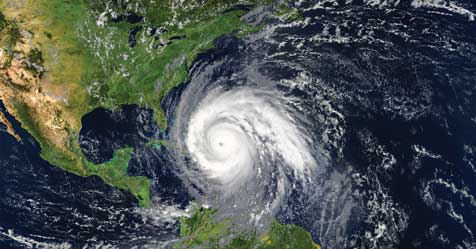Cleaning in health care environments is not a task—it’s a responsibility that can save lives or jeopardize them.
Yet, far too many companies enter this specialized field without understanding the weight of that responsibility. According to Iris Verdi, a 25-year veteran of health care leadership and health care subject matter expert at Kellermeyer Bergensons Services (KBS), not everyone is qualified to clean where patients receive care—and pretending otherwise is dangerous.
“I often see companies underestimate the complexity of cleaning in health care,” Verdi said. “They approach it like commercial or residential cleaning, not realizing that infection prevention, compliance with strict protocols, and patient safety are non-negotiable.”
Verdi knows both sides of the industry well. Before joining KBS, she spent years as an environmental services director and a facilities vice president in large hospital systems. “I was the customer. I was outsourcing cleaning of my clinics, surgical centers, and ancillary spaces,” she said. “Now I’m on the other side, and I bring that expectation with me.”
Would I feel safe here?
When Verdi visits health care facilities—even as a patient—her professional instincts kick in. “I’ve had surgery in two different hospitals. In one, I was in charge of environmental services, and I felt completely safe,” she said. “In the other, where I had no control over cleaning protocols, I was nervous. I didn’t know what standards were being followed.”
She adds that even details like the timing of a surgical procedure matter. “A lot of us in the industry prefer to be the first case of the day because we know the OR is cleaned more thoroughly overnight than it may be between cases,” she said. “It shouldn’t be that way, but it often is.”
Beyond aesthetics: The true nature of health care cleaning
The difference between health care and commercial cleaning is rooted in purpose. “Unlike commercial settings where aesthetics are the focus, health care cleaning is about infection prevention,” Verdi explained. “You have to understand pathogens, disinfection protocols, and compliance with CDC, OSHA, and AORN standards.”
During the recent “quademic”—a simultaneous outbreak of COVID-19, RSV, flu, and norovirus—Verdi saw how dangerous underprepared contractors can be. “We’re seeing diseases reemerge that require very specific cleaning procedures. You can’t treat measles or pertussis like basic germs. Measles, for instance, can linger in the air for two hours.”
What makes a cleaner ‘qualified’?
Being qualified, Verdi said, goes far beyond good intentions. “It means your staff is properly trained. You understand the chain of infection. You know the correct dwell times for disinfectants, and you use the right product for the right pathogen in the right way.”
There’s no shortage of resources, either. “CHEST (Certified Health Care Environmental Services Technician) certification through AHE (Association for the Health Care Environment), ISSA’s CIMS (Cleaning Industry Management System), and even OSHA and CDC offer training,” she said. “But some of the most critical things—like OSHA’s Bloodborne Pathogen Standard and PPE training—are often overlooked. And they’re not optional.”
Verdi is especially adamant about understanding dangerous pathogens like Candida auris, a drug-resistant fungus with a 40% mortality rate that’s spreading in long-term care facilities. “It’s incredibly hard to kill and even harder to identify. It’s not something you’ll manage safely if your staff doesn’t know what they’re doing.”
Stop chasing the lowest bid
One of the most common failures Verdi sees in health care cleaning is hiring based on price. “Facilities too often go with the lowest bidder,” she said. “I understand savings—but I also understand that hospital-acquired infections and surgical site infections cost money. If a patient gets sick due to improper cleaning, that cost is no longer billable. And it’s publicly reported.”
According to Verdi, the U.S. spent roughly $40 billion last year on care for patients who acquired infections during hospital stays.
Accountability and continuous validation
Credentialing and verification are areas of concern. “Who’s checking credentials? Too often, no one,” Verdi said. “Facilities assume cleaning is being done correctly, but they don’t validate.”
To combat this, Verdi advocates for ATP testing, visual inspections, and fluorescence markers as both training tools and validation methods. “I don’t like using these as a ‘gotcha.’ I use them as a collaboration between myself, the customer, and the housekeepers to make sure we’re doing what we say we’re doing.”
She is also strict about chemical use. “Not all disinfectants are created equally. If your product has a 10-minute dwell time and you wipe it off in five, you’re not disinfecting. You’re just spreading germs around.”
The human factor: Calling and commitment
For Verdi, health care cleaning is more than a job—it’s a calling. “I’ve always told my staff from day one that what they do is important,” she said. “We don’t get to have bad days. When you come in and don’t give 100%, you can hurt someone.”
Training is not a one-time event. “We believe in weekly training, sending reminders, and asking staff to teach it back to us. That’s how you know they really understand it.”
She adds that it’s not just about hospitals. “Every place where care is given—from surgical centers to physician offices—requires the same vigilance. The pathogens don’t change just because the environment is smaller.”
A passion fueled by personal experience
Verdi’s passion for her work stems from a childhood spent in and out of hospitals with two sick parents. “At 13, I told my dad I’d never work in a hospital. Now I can’t imagine doing anything else,” she said. “I advocate for doing things the right way because I’ve seen what happens when we don’t.”
Today, she serves on committees for the ISSA and the Health care Surfaces Institute (HSI), working to develop standards that promote safety and accountability across all care environments.
“The first speaker at our last summit was a MRSA survivor—someone who almost died because of a poorly disinfected surface,” Verdi recalled. “That’s where our conversations should begin—with the people affected.”
Do it right
Verdi leaves aspiring health care cleaners with a direct message: “There are no shortcuts. There are resources, tools, and training—but if you think health care cleaning is just like cleaning an office, this isn’t for you.”
She recounts a recent walk-through where two men commented that health care cleaning “isn’t so different” from other spaces. “I turned around and said, ‘This is completely different. And if you don’t understand that, you’re in the wrong place.’”
The bottom line
For Verdi, it is clear: Cleaning in health care settings is not an entry-level opportunity or a quick contract win. It’s patient care. It’s infection prevention. It’s a calling. And it must be treated with the seriousness, preparation, and professionalism it demands—because lives depend on it.
To read more insights from Iris Verdi, click here.

